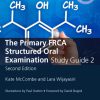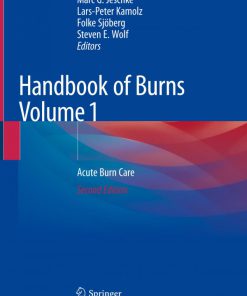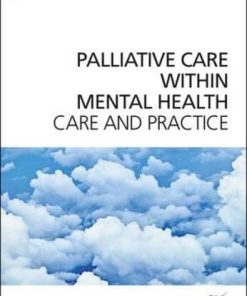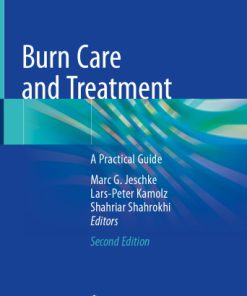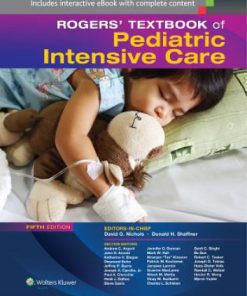Total Burn Care 5th edition by David Herndon 0323510493 9780323510493
$50.00 Original price was: $50.00.$25.00Current price is: $25.00.
Total Burn Care 5th edition by David N. Herndon – Ebook PDF Instant Download/DeliveryISBN: 0323510493, 9780323510493
Full download Total Burn Care 5th edition after payment.
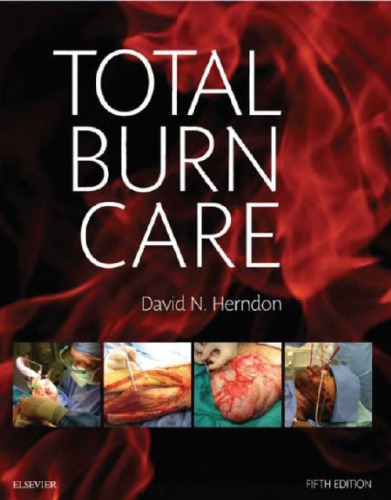
Product details:
ISBN-10 : 0323510493
ISBN-13 : 9780323510493
Author: David N. Herndon
Recent advances in research have resulted in tremendous changes in burn management. Stay fully up to date with the new edition of Total Burn Care, by leading authority Dr. David N. Herndon. Detailed procedural guidelines and video clips walk you through every step of the process, from resuscitation through reconstruction and rehabilitation. Everyone on the burn care team, including general and plastic surgeons, intensivists, anesthestists, and nurses, will benefit from this integrated, multidisciplinary guide to safe and effective burn management.
Total Burn Care 5th table of contents:
1 A Brief History of Acute Burn Care Management
Early Excision
Skin Grafting
Topical Control of Infection
Nutritional Support
Fluid Resuscitation
Inhalation Injury
Hypermetabolic Response to Trauma
Conclusion
Further Reading
References
2 Teamwork for Total Burn Care
Introduction
Members of a Burn Team
Dynamics and Functioning of the Burn Team
Summary
References
3 Epidemiological, Demographic and Outcome Characteristics of Burns
Introduction
Demography
High-Risk Populations
Burn Etiologies
Burn Patient Transport and Transfer
Mass Casualties
Outcome Analysis in Burns
Conclusion
References
4 Prevention of Burn Injuries
Introduction
Injury Prevention Models
Burn Intervention Strategy
Epidemiology
Engineering and Enforcement
Education
Evaluation
Global Burn Prevention
Future
References
5 Burn Management in Disasters and Humanitarian Crises
Introduction
Definitions
The Historical Record
Phases of Mass Casualty Events
Emergency Care: Special Considerations in Disasters
Communication
Strategies for Distribution of Patients and Resources
Humanitarian Crises
Conclusions
References
6 Care of Outpatient Burns
Introduction
Who Can Be Managed as an Outpatient?
Management of Minor Burns
Outpatient Treatment of Moderate and Major Burns
Conclusion
References
7 Prehospital Management, Transportation, and Emergency Care
Introduction
Prehospital Care
Onsite Assessment of a Burned Patient
Transport to Hospital Emergency Department
Transferring a Burn Patient
Privacy and Security Issues
Transportation Guidelines
Stabilization
Patient Assessment Prior to Transport to a Specialized Burn Care Unit From a Referring Hospital
Summary
Further Reading
References
8 Pathophysiology of Burn Shock and Burn Edema
Introduction and Historical Notes
Hypovolemia and Rapid Edema Formation
Normal Microcirculatory Fluid Exchange
Mechanisms of Burn Edema
Unburned Tissue
Altered Cellular Membranes and Cellular Edema
Inflammatory Mediators of Burn Injury
Hemodynamic Consequences
Conclusion
Further Reading
References
9 Burn Resuscitation
Introduction
Early Approaches to Fluid Resuscitation
Children
Choice of Fluid
Route of Administration
Patients at Increased Risk During Resuscitation
Monitoring Resuscitation
Fluid Creep and Edema Management
Pharmacologic and Extracorporeal Adjuncts
Protocol-Driven and Computerized Resuscitation
Conclusion
References
10 Evaluation of the Burn Wound
Introduction
Pathophysiology of the Burn Wound
Pathophysiological Changes of Thermal Injury
Assessment of Burn Depth
Mechanisms of Thermal Injury
Further Reading
References
11 Treatment of Infection in Burn Patients
Introduction
Prevention of Infection
Diagnosis of Burn Wound Infection
Treatment of Burn Wound Infections
Specific Pathogens in Burn Wounds
Infections From Sources Other Than Wounds in the Burn Patient
Conclusion
References
12 Operative Wound Management
Introduction
Advantages of Operative Wound Management
Techniques of Burn Wound Excision
Advances in Wound Closure
Management of Specific Types of Burns
Operative Management of Burns Involving Special Areas
Conclusion
Further Reading
References
13 Anesthesia for Burned Patients
Introduction
Preoperative Evaluation
Pharmacological Considerations
Airway Management
Monitors
Vascular Access
Patient Transport
Selection of Anesthetic Agents
Fluid Management
Postoperative Care
Conclusion
References
14 The Skin Bank
History
The Growth of Skin Banking
Role of the American Association of Tissue Banks
Clinical Uses of Allograft Skin
Potential Disadvantages of Allograft Use
Technical Aspects of Skin Banking
Transport
Rewarming
FDA Regulation of Human Skin Banking
The Future of Skin Banking
References
15 Skin Substitutes and ‘the next level’
Introduction
Temporary Skin Substitutes and Dressings
Permanent Skin Substitutes
Full Skin Substitutes
Regulatory Issues
Conclusion
References
16 The Pathophysiology of Inhalation Injury
Introduction and Epidemiology
Pathophysiology
The Fire Environment and Toxic Smoke Compounds
References
17 Diagnosis and Treatment of Inhalation Injury
Introduction
Diagnosis
Pathophysiology of Pulmonary Insufficiency with Inhalation Injury
Treatment
Potential Future Therapeutic Strategies
Long-Term Changes in Pulmonary Function
References
18 Respiratory Care
Introduction
Bronchial Hygiene Therapy
Mechanical Ventilation
Infection Control of Respiratory Equipment
Late Complications of Inhalation Injury
Summary
Further Reading
References
19 The Systemic Inflammatory Response Syndrome
Introduction
Definition of SIRS
The Initiating Event
SIRS and Immunological Perturbations
The Two-Hit Hypothesis
Cytokine and Noncytokine Mediators of SIRS
Circulating Cytokines as Markers of SIRS and Predictors of Outcome
Anti-Inflammatory Therapy for SIRS
Changes in Endothelial Permeability
The Hyperdynamic State
Conclusion
Further Reading
References
20 Host Defense Antibacterial Effector Cells Influenced by Massive Burns
Introduction
Neutrophils
Macrophages
Innate Lymphoid Cells
Dendritic Cells
Summary
References
21 Biomarkers in Burn Patient Care
Introduction
Prediction of Sepsis and Infection
Prediction of Patient Survival with Clinical Characteristics
Inhalation Injury and Mechanical Ventilation
Resuscitation and Kidney Function
Wound Healing
Conclusion
Further Reading
References
22 Hematology, Hemostasis, Thromboprophylaxis, and Transfusion Medicine in Burn Patients
Introduction
Etiology of Anemia in Burn Patients
Hemostasis in Burn Patients
Coagulopathy in Burn Patients
Transfusion of Blood Cells
Venothromboembolic Prophylaxis
Hematopoiesis
Conclusion
References
23 Significance of the Hormonal, Adrenal, and Sympathetic Responses to Burn Injury
Introduction
Normal Hypothalamic-Pituitary-Adrenal Axis
Strong Sympathetic Activation Following Burn Trauma
Role of Thyroid Function
Further Reading
References
24 The Hepatic Response to Thermal Injury
Introduction
Anatomy and Physiology of the Liver
The Hepatic Response to a Severe Thermal Injury
Importance of the Liver for Postburn Outcomes
Conclusion
Acknowledgments
Further Reading
References
25 Importance of Mineral and Bone Metabolism after Burn
Metabolic Actions of Calcium, Phosphate, and Magnesium
Homeostasis of Calcium, Phosphate, and Magnesium
Effect of Burn Injury on Calcium, Phosphate, and Magnesium Homeostasis
Rationale for Therapy
Treatments for Maintaining Mineral Homeostasis
Hypercalcemia and Impaired Renal Function After Burns
Bone
Treatment of Bone Catabolism After Severe Burn
Heterotopic Ossification After Burn Injury
Acknowledgement
Further Reading
References
26 Micronutrient Homeostasis
Importance of Vitamins and Trace Elements
Vitamins
Trace Elements
Conclusion
Further Reading
References
27 Hypophosphatemia
Etiology of Postburn Hypophosphatemia
Consequences of Hypophosphatemia
Prevention and Treatment of Hypophosphatemia
Further Reading
References
28 Nutritional Needs and Support for the Burned Patient
Introduction
Metabolic Pathology Associated With Burn Injury
Nutritional Demand and Substrate Metabolism in Burn Patients
Nutritional Support
Nutritional Assessment and Monitoring
Conclusion
Further Reading
References
29 Modulation of the Hypermetabolic Response after Burn Injury
Introduction
Cardiovascular Dysfunction
Skeletal Muscle Catabolism and Regeneration
Insulin Resistance and Hyperglycemia
Alterations in Lipid Metabolism and Fat Composition
Nonpharmacological Modulation of the Hypermetabolic Response
Pharmacological Modulation of the Hypermetabolic Response
Alternative Therapeutic Options
Conclusion
References
30 Etiology and Prevention of Multisystem Organ Failure
Introduction
Etiology and Cellular Response
Organ-Specific Failure and Prevention
Prevention of Sepsis
Ensuring Adequate Oxygen Delivery
The Potential Role of Nutritional and Specific Immunomodulators
References
31 Acute Renal Failure in Association with Thermal Injury
Introduction
Definition
Etiology
Diagnosis
Treatment
Conclusion
References
32 Critical Care in the Severely Burned
Introduction
Burn Intensive Care Unit Organization
Hemodynamic Monitoring in the Burn Intensive Care Unit
Multisystem Organ Failure
Critical Care Interventions
Prevention of Organ Failure
Conclusion
Further Reading
References
33 Burn Nursing
Introduction
Emergency Needs: Resuscitation and Pulmonary Priorities
Acute Care of the Burn Wound
Surgical Care
Nutrition and Metabolic Changes
Pain and Anxiety Assessment and Management
Patient and Family Education
Rehabilitation of the Burn Patient
Reconstructive Care
Recovery and Social Reintegration
Conclusion
Further Reading
References
34 Care of the Burned Pregnant Patient
Introduction
Mortality Factors
Fetal Viability
Treatment
Additional Considerations
Conclusion
Further Readings
References
35 Special Considerations of Age
Introduction
Initial Evaluation
Resuscitation
Assessment of Resuscitation
Evaluation and Management of Airways
Inhalation Injury
Hypermetabolism
Growth Delay
Management of Burn Wound
Pain Management
Rehabilitation
Prevention
Further Reading
References
36 Care of Geriatric Patients
Introduction
Epidemiology
Outcome
Risk Factors
Treatment
Pain, Sedation, and Comfort Care
Perioperative Optimization
Rehabilitation
Intentional Burns in Older Adults
Conclusion
Further Reading
References
37 Surgical Management of Complications of Burn Injury
Introduction
Burns and Trauma
Gastrointestinal Tract Complications
Vascular Complications
Thoracic Complications
Urologic Complications
Conclusion
Further Reading
References
38 Electrical Injuries
Introduction
Pathophysiology
Acute Care
Electrocardiographic Monitoring
Myoglobinuria
Compartment Syndrome and Initial Operative Intervention
Further Surgical and Wound Considerations
Problem Areas
Lightning Injury
Low-Voltage Injuries
Complications
References
39 Cold-Induced Injury
History of Frostbite
Pathophysiology and Classification of Frostbite
Clinical Findings and Classification of Frostbite Injury
Initial Management of Freezing Cold Injury
Post-Thaw Evaluation and Management
Conclusion
Further Reading
References
40 Chemical Burns
Introduction
Pathophysiology
General Principles of Management
Specific Agents
Conclusion
Further Reading
References
41 Radiation Injuries and Vesicant Burns
Radiation Injury: Introduction
Terminology
Incidence
Pathophysiology
Treatment
Vesicant Burns
Further Reading
References
42 Exfoliative Diseases of the Integument and Soft Tissue Necrotizing Infections
Introduction
Severe Exfoliative Disorders
Toxic Epidermal Necrolysis
Soft-Tissue Infections and Other Acute Skin Disorders
Conclusion
Further Reading
References
43 Burn Injuries of the Eye
Introduction
Selected Anatomy
Examination
Applied Pathology
Interventions
References
44 The Burn Problem
Introduction
Systemic Reactions to Burns
Review of Organ Systems Affected by Burns
The Burn Autopsy
Further Reading
References
45 Molecular and Cellular Basis of Hypertrophic Scarring
Introduction
Extracellular Matrix
Cellular Contributions to Hypertrophic Scar
The Role of Cytokines in Hypertrophic Scar
The Immune System Regulates Wound Healing
Conclusion
Further Reading
References
46 Pathophysiology of the Burn Scar
Introduction
Biology of Wound Healing
Factors That Alter Wound Healing
Hypertrophic Wound Healing
Conclusion
Further Reading
References
47 Burn Rehabilitation Along the Continuum of Care
Introduction
Evaluation of the Burn Patient
Positioning and Splinting of the Burn Patient
Prosthetic Interventions
Burn Scar Management
The Role of Exercise Physiology in Burn Rehabilitation
When to Implement an Exercise Program
Exercise Prescription
Example of an Exercise Program
Patient and Caregiver Education
Conclusion
Further Reading
References
48 Musculoskeletal Changes Secondary to Thermal Burns
Acknowledgment
Introduction
Changes Confined to Bone
Changes Involving Pericapsular Structures
Changes Involving the Joints
Alterations in Growth
Further Reading
References
49 Reconstruction of Bodily Deformities in Burn Patients
Reconstruction of Burn Deformities
Allotransplantation: Facial Transplantation
Comments
Further Reading
References
50 Reconstruction of the Head and Neck after Burns
Introduction
Acute Management
Pathogenesis
Evaluation of Facial Burn Deformities
Fundamental Principles and Techniques
Timing of Reconstructive Surgery
Reconstruction of Specific Areas of the Head and Neck
Burn Neck Contractures
Further Reading
References
51 Management of Postburn Alopecia
Introduction
Spectrum of Postburn Alopecia
Surgical Correction of Alopecia
Conflict of Interest
References
52 Trunk Deformity Reconstruction
Introduction
Reconstruction of the Trunk Soft Tissue Layers
Reconstruction of the Trunk Boundaries
Reconstruction of the Breast
Conclusion
References
53 Management of Contractural Deformities Involving the Shoulder (Axilla), Elbow, Hip, and Knee Joints in Burned Patients
Introduction
Contractural Deformities of the Shoulder (Axilla), Elbow, Hip, and Knee Observed in a Burned Patient
Management During the Acute Phase of Recovery
Management During the Intermediate Phase of Recovery
Management of Established Contractural Deformities
Conclusion
Further Reading
References
54 Acute and Reconstructive Care of the Burned Hand
Introduction
Initial Assessment and First Aid
Acute Care of the Burned Hand
Occupational Therapy of the Burned Hand
Management of Established Burned Hand Deformities
Reconstruction of Phalangeal Deformities
Electrical Injuries Involving the Upper Limb
Conclusion
Further Reading
References
55 Management of Burn Injuries of the Perineum
Introduction
Management During the Acute Phase of Injury
Reconstruction of Established Deformities of the Perineum and Perineal Structures
Conclusion
Further Reading
References
56 Reconstruction of Burn Deformities of the Lower Extremity
Assessment of Salvage Potential
Amputations
Early Reconstruction
Late Reconstruction
Grafts and Flaps
Conclusion
References
57 Electrical Injury
Introduction
Physiological Basis of Tissue Destruction
Diagnosis and Acute Treatment
Assessment of Tissue Damage
Rhabdomyolysis and Myoglobinuria
Renal Failure
Cardiac Monitoring
Surgical Debridement
Compartment Syndrome
Head: Scalp, Skull, and Mouth
Thorax and Abdomen
Extremities
Amputations
Peripheral Nerve Injury
Complications
Skeletal Injury
Conclusion
Further Reading
References
58 The Role of Alternative Wound Substitutes in Major Burn Wounds and Burn Scar Resurfacing
Introduction
Classification of Alternative Wound Substitutes
Clinical Applications of Alternative Wound Substitutes in Major Burn Wounds
Clinical Applications of Alternative Wound Substitutes in Burn Scar Resurfacing
Future Directions
References
59 Aesthetic Reconstruction in Burn Patients
Introduction
Timing of Reconstruction
Patient–Surgeon Relationship
Pre- and Postoperative Care in Burn Reconstruction
Surgical Approach to the Burn Reconstructive Patient: The Role of the Reconstructive Ladder
Aesthetic Reconstruction of Burned Patients
References
60 Laser for Burn Scar Treatment
History of Laser and Intense Pulse Light
Physics of Laser
Overview of Lasers in Hypertrophic Burn Scar
Treatment of Specific Post Burn Scar Conditions
Laser Complications and Laser Safety
Logistical and Financial Considerations
Future Investigations
Conclusion
References
61 The Ethical Dimension of Burn Care
Introduction
What Is an Ethical Problem?
How Should Clinical Ethics Problems Be Managed?
The Patient Without Decision-Making Capacity, Surrogate, or Advance Directive
How Should Organizational Ethics Problems Be Managed?
Conclusion
Further Reading
References
62 Intentional Burn Injuries
Introduction
Prevalence Rates of Intentional Burn Injuries
Distinctive Characteristics of Perpetrators and Families
Indicators of Intentional Injuries
Self-Inflicted Burn Injuries
Clinical Evaluation of Suspicious Injury With Pediatric Patient and Family
Types of Burn
Psychosocial Assessment
Reporting Suspected Intentional Burn Injury
Clinical Interviewing With Other Vulnerable Populations
Maintaining Professional Relationships With Patient and Family
Future Burn Prevention and Child Safety
Further Reading
References
63 Functional Sequelae and Disability Assessment
Introduction
Postburn System-Based Disability Assessment
References
64 Management of Pain and Other Discomforts in Burned Patients
Introduction
Pathology of a Burn Injury Pain and Pain-Generating Mechanisms
Additional Factors Contributing to Pain Generation
Pain as a Function of the Healing Process
Tolerance to Opiates and Opiate-Induced Hyperalgesia
Measurement of Pain in Burned Patients
Measurement of Anxiety
Measurement of Itching
Treatment Considerations
Initial Injury
Background and Breakthrough Pain
Analgesia for Procedures
Itch Medications
Development of Protocols for Comfort
Classical Conditioning
Operant Conditioning
Cognitive Interventions
Augmented Reality
Hypnosis
Conclusion
References
65 Psychiatric Disorders Associated With Burn Injury
Introduction
Preexisting Factors
Disorders in Children and Adolescents
Social Considerations in Pediatric Burns
Self-Inflicted Burns and Suicide Attempts
In-Hospital Contributing Factors and Disorders
Acute Stress Disorder and Posttraumatic Stress Disorder
Long-Term Postburn Disorders
General Anxiety Disorder
Major Depressive Disorder
Persistent Depressive Disorder
Substance-Related and Addictive Disorders
Comorbidity and Problems Beyond Psychiatric Illness
Adjustment in Children After Burns
Diagnosis (Screening Instruments, SCID)
Treatment
Resilience, Posttraumatic Growth
Conclusion
References
66 Psychosocial Recovery and Reintegration of Patients With Burn Injuries
Introduction
Integrating Psychological Treatment With Physical Treatment
Assisting With Grief Following Trauma
Cultural Sensitivity
Postburn Psychological Distress and Long-Term Outcome
Chronicity of Postburn Psychological Distress: From In-Hospital Through Long-Term Follow-Up
Theory-Guided Research as the Next Step in Enhancing Psychological and Social Adjustment
Formulating Psychological Distress Following Burn Injury: Using Posttrauma Distress as an Illustration
People also search for Total Burn Care 5th:
total burn care pdf free download
total burn care book pdf
total burn care latest edition
total burn care 4th edition
total burn care 6th edition pdf
Tags: Total Burn Care, David Herndon, tremendous changes, burn management
You may also like…
Romance - Contemporary Romance
Uncategorized
Arts - Music
Medicine - Clinical Medicine
Medicine
Migrant Health A Primary Care Perspective 1st Edition Bernadette N Kumar 1351017179 9781351017176
Medicine - Pediatrics
Rogers textbook of pediatric intensive care David G. Nichols
Fiction - Essays



